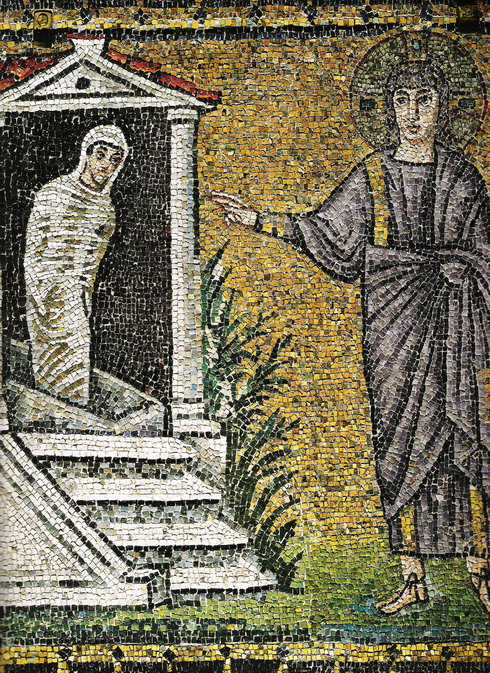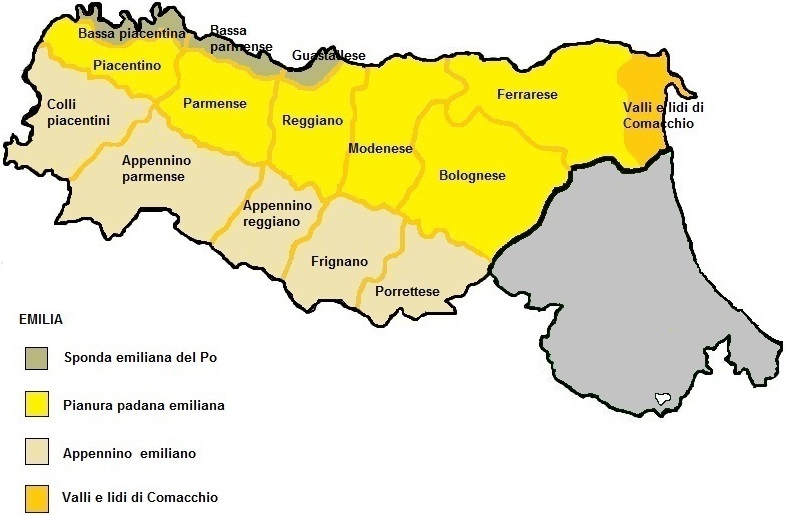|
Isaac The Armenian
Isaac the Armenian (; ) was an exarch of Ravenna hailing from the Kamsarakan clan. The chronology of the Exarchate in this period is uncertain: either he succeeded Euselnus and served c. 625 – 643; or he succeeded Eleutherius, and served 620 – 637. Life and reign The ''Chronicle of Fredegar'' records a story of how Isaac slew Tasso, duke of Tuscany, by deceit for the benefit of the Lombard king Arioald. However, according to Paul the Deacon, it was the patriarch Gregory who killed Tasso, and Tasso was instead the Duke of Friuli with his brother Kakko. In 638, the Eastern Roman Emperor Heraclius demanded that the new Pope Severinus sign his ''Ecthesis'', a Monothelite profession of faith. Severinus refused; Heraclius denied recognition to the pope and sent an official named Maurikios Chartoularios to negotiate with the papacy. Maurikios Chartoularios, after arriving in Rome, seized the Lateran and encouraged Isaac to come to the city. Isaac did so; he then briefly ... [...More Info...] [...Related Items...] OR: [Wikipedia] [Google] [Baidu] |
Eleutherius (exarch)
Eleutherius (; died 620) was the exarch of Ravenna from 615 to 619, succeeding the eunuch John I. Early in his reign, nearly the entire exarchate was unstable. In Ravenna, there was obvious discontent with the Byzantines; in Naples, a certain John of Conza separated the city from the exarch's control. Eleutherius arrived in Ravenna and immediately put to death "all who had been implicated in the death of Exarch John and the judges of the State." Then, after making a courtesy visit to Pope Deusdedit, Eleutherius marched on Naples, and captured that city, killing the rebel John and his supporters. However, soon after the Lombards threatened war. Eleutherius was able to sue for peace, promising a yearly tribute. Finding the situation in Italy to be unsatisfactory and taking advantage of the Byzantine Emperor Heraclius' preoccupation with the Sassanids, Eleutherius proclaimed himself emperor in 619, with the intent of setting up his capital in Rome Rome (Italian language, Ita ... [...More Info...] [...Related Items...] OR: [Wikipedia] [Google] [Baidu] |
Lazarus Of Bethany
Lazarus of Bethany is a figure of the New Testament whose life is restored by Jesus four days after his death, as told in the Gospel of John. The resurrection is considered one of the miracles of Jesus. In the Eastern Orthodox Church, Lazarus is Veneration, venerated as Righteous Lazarus, the Four-Days Dead. The Eastern Orthodox and Catholic Church, Catholic traditions offer varying accounts of the later events of his life. In the context of the Book of Signs, seven signs in the Gospel of John, the raising of Lazarus at Bethany – today the town of Al-Eizariya in the West Bank, which translates to "the place of Lazarus" – is the climactic narrative: exemplifying the power of Jesus "over the last and most irresistible enemy of humanity: death. For this reason, it is given a prominent place in the gospel." The name ''Lazarus'' is frequently used in science and popular culture in reference to apparent restoration to life; for example, the scientific term Lazarus taxon denotes o ... [...More Info...] [...Related Items...] OR: [Wikipedia] [Google] [Baidu] |
Daniel (biblical Figure)
Daniel (Biblical Aramaic, Aramaic and ; ; ) is the main character of the Book of Daniel. According to the Hebrew Bible, Daniel was a Nobility, noble Jews, Jewish youth of Jerusalem taken into captivity by Nebuchadnezzar II of Babylon, serving the king and his successors with loyalty and ability until the time of the Persians, Persian conqueror Cyrus the Great, Cyrus, all the while remaining true to the God of Israel. While some conservative scholars hold that Daniel existed and his book was written in the 6th century BCE, most scholars agree that Daniel, as depicted in the Book of Daniel, was not a historical figure, wherein the character was probably based on a similar legendary Daniel from earlier traditions. It follows that much of the book is a Roman à clef, cryptic allusion to the reign of the 2nd century BCE Diadochi, Hellenistic king Antiochus IV Epiphanes. Six cities claim the Tomb of Daniel, the most famous being that in Susa, in southern Iran, at a site known as Tomb ... [...More Info...] [...Related Items...] OR: [Wikipedia] [Google] [Baidu] |
Sarcophagus
A sarcophagus (: sarcophagi or sarcophaguses) is a coffin, most commonly carved in stone, and usually displayed above ground, though it may also be buried. The word ''sarcophagus'' comes from the Greek language, Greek wikt:σάρξ, σάρξ ' meaning "flesh", and wikt:φαγεῖν, φαγεῖν ' meaning "to eat"; hence ''sarcophagus'' means "flesh-eating", from the phrase ''lithos sarkophagos'' (wikt:λίθος, λίθος wikt:σαρκοφάγος, σαρκοφάγος), "flesh-eating stone". The word also came to refer to a particular kind of limestone that was thought to rapidly facilitate the corpse decomposition, decomposition of the flesh of corpses contained within it due to the chemical properties of the limestone itself. History of the sarcophagus Sarcophagi were most often designed to remain above ground. The earliest stone sarcophagi were used by Pharaoh, Egyptian pharaohs of the 3rd dynasty, which reigned from about 2686 to 2613 BC. The Hagia Triada sarcoph ... [...More Info...] [...Related Items...] OR: [Wikipedia] [Google] [Baidu] |
Pope Theodore I
Pope Theodore I (; died 14 May 649) was the bishop of Rome from 24 November 642 to his death on 14 May 649. His pontificate was dominated by the struggle with Monothelitism. Early career According to the ''Liber Pontificalis'', Theodore was a Greek man from Jerusalem whose father, Theodore, had been a bishop in the city; he is the only pope to have been a native of that city. He was among the many Syrian clergy who fled to Rome following the Muslim conquest of the Levant. He was made a cardinal deacon possibly around 640 and a full cardinal by Pope John IV. Pontificate Theodore I's election was supported by the exarch of Ravenna, who governed Italy in the name of the emperor in Constantinople. He was installed on 24 November 642, succeeding John IV. The main focus of his pontificate was the continued struggle against the heretical Monothelites. He refused to recognize Paul II as the patriarch of Constantinople because Paul's predecessor, Pyrrhus I, had not been correctly ... [...More Info...] [...Related Items...] OR: [Wikipedia] [Google] [Baidu] |
Panaro (river)
The Panaro is an Italian river and the final right-hand tributary to the Po, discounting the Cavo Napoleonico canal. It runs right across Emilia-Romagna in a north-easterly direction: from its source close to the Apennine watershed, where Emilia-Romagna meets Tuscany, to its outlet where the Po marks the region's boundary with Veneto. Its Latin name was ''Scultenna''. It is long, with a drainage basin; alternating between aridity in summer and fullness in spring and autumn. Its principal source, the Rio delle Tagliole, rises at Foce a Giovo, Monte Rondinaio, some south-west of highest peak of the Tuscan- Emillian Apennines, Monte Cimone, elevation . From here it flows down the valley in a northeastern direction. At Pievepelago (in the Province of Modena) it changes name to Scoltenna, assuming in the territory of Pavullo nel Frignano finally that of Panaro. In this area it makes up the border between the communities of Montana del Frignano and Montana dell’appenni ... [...More Info...] [...Related Items...] OR: [Wikipedia] [Google] [Baidu] |
Emilia (region Of Italy)
Emilia () is a historical region of northern Italy, which approximately corresponds to the western and the north-eastern portions of the modern region of Emilia-Romagna, with the area of Romagna forming the remainder of the modern region. Etymology Emilia takes its name from the Via Aemilia, a Roman road constructed by the consul Marcus Aemilius Lepidus in 187 BCE to connect Rimini with Piacenza. The name was transferred to the district (which formed the eighth Augustan region of Italy) as early as the time of Martial, in popular usage. In the 2nd and 3rd centuries Aemilia was frequently named as a district under imperial judges (), generally in combination with Flaminia or Liguria and Tuscia. The district of Ravenna was, as a rule, from the 3rd to the 5th century, not treated as part of Aemilia, the chief town of the latter being Placentia (Piacenza). In the 4th century Aemilia and Liguria were joined to form a consular province; after that Aemilia stood alone, Ravenna b ... [...More Info...] [...Related Items...] OR: [Wikipedia] [Google] [Baidu] |
Liguria
Liguria (; ; , ) is a Regions of Italy, region of north-western Italy; its Capital city, capital is Genoa. Its territory is crossed by the Alps and the Apennine Mountains, Apennines Mountain chain, mountain range and is roughly coextensive with the former territory of the Republic of Genoa. Liguria is bordered by France (Provence-Alpes-Côte d'Azur) to the west, Piedmont to the north, and Emilia-Romagna and Tuscany to the east. It rests on the Ligurian Sea, and has a population of 1,509,908 as of 2025. The region is part of the Alps–Mediterranean Euroregion. Etymology The name ''Liguria'' predates Latin and is of obscure origin. The Latin adjectives (as in ) and ''Liguscus'' reveal the original root of the name, ''ligusc-'': in the Latin name -sc- was shortened to -s-, and later turned into the -r- of , according to rhotacism (sound change), rhotacism. Compare whence . The name derives from the ancient Ligures people, although the territory of this people was much larger th ... [...More Info...] [...Related Items...] OR: [Wikipedia] [Google] [Baidu] |
Rothari
Rothari (or Rothair) ( 606 – 652), of the house of Arodus, was king of the Lombards from 636 to 652; previously he had been duke of Brescia. He succeeded Arioald, who was an Arian like himself, and was one of the most energetic of Lombard kings. Fredegar relates (''Chronicle'', 71) that at the beginning of his reign he put to death many insubordinate nobles, and that in his efforts for peace he maintained very strict discipline. Life Rothari was the son of Nanding, and Duke of Brescia. Upon the death of Arioald in 636, he was elected King of the Lombards. He married Arioald's widow, Gundeberga, daughter of King Agilulf and Queen Theodelinda. The Catholic Gundeberga agreed to marry the Arian Rothari because he was tolerant of Catholics. He managed to reinforce the central authority of the king in the face of resistance on the part of the dukes. Career Rothari conquered Genoa in 641 and all remaining Eastern Roman territories in the lower valley of the Po, including Oder ... [...More Info...] [...Related Items...] OR: [Wikipedia] [Google] [Baidu] |
Liber Pontificalis
The ''Liber Pontificalis'' (Latin for 'pontifical book' or ''Book of the Popes'') is a book of biography, biographies of popes from Saint Peter until the 15th century. The original publication of the ''Liber Pontificalis'' stopped with Pope Adrian II (867–872) or Pope Stephen V (885–891), but it was later supplemented in a different style until Pope Eugene IV (1431–1447) and then Pope Pius II (1458–1464). Although quoted virtually uncritically from the 8th to 18th centuries, the ''Liber Pontificalis'' has undergone intense modern scholarly scrutiny. The work of the French priest Louis Duchesne (who compiled the major scholarly edition), and of others has highlighted some of the underlying redactional motivations of different sections, though such interests are so disparate and varied as to render improbable one populariser's claim that it is an "unofficial instrument of pontifical propaganda." The title ''Liber Pontificalis'' goes back to the 12th century, although it on ... [...More Info...] [...Related Items...] OR: [Wikipedia] [Google] [Baidu] |





